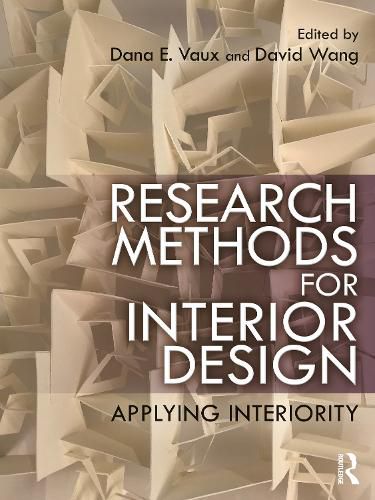Readings Newsletter
Become a Readings Member to make your shopping experience even easier.
Sign in or sign up for free!
You’re not far away from qualifying for FREE standard shipping within Australia
You’ve qualified for FREE standard shipping within Australia
The cart is loading…






Interior design has shifted significantly in the past fifty years from a focus on home decoration within family and consumer sciences to a focus on the impact of health and safety within the interior environment. This shift has called for a deeper focus in evidence-based research for interior design education and practice.
Research Methods for Interior Design provides a broad range of qualitative and quantitative examples, each highlighted as a case of interior design research. Each chapter is supplemented with an in-depth introduction, additional questions, suggested exercises, and additional research references. The book’s subtitle, Applying Interiority, identifies one reason why the field of interior design is expanding, namely, all people wish to achieve a subjective sense of well-being within built environments, even when those environments are not defined by walls. The chapters of this book exemplify different ways to comprehend interiority through clearly defined research methodologies.
This book is a significant resource for interior design students, educators, and researchers in providing them with an expanded vision of what interior design research can encompass.
$9.00 standard shipping within Australia
FREE standard shipping within Australia for orders over $100.00
Express & International shipping calculated at checkout
Stock availability can be subject to change without notice. We recommend calling the shop or contacting our online team to check availability of low stock items. Please see our Shopping Online page for more details.
Interior design has shifted significantly in the past fifty years from a focus on home decoration within family and consumer sciences to a focus on the impact of health and safety within the interior environment. This shift has called for a deeper focus in evidence-based research for interior design education and practice.
Research Methods for Interior Design provides a broad range of qualitative and quantitative examples, each highlighted as a case of interior design research. Each chapter is supplemented with an in-depth introduction, additional questions, suggested exercises, and additional research references. The book’s subtitle, Applying Interiority, identifies one reason why the field of interior design is expanding, namely, all people wish to achieve a subjective sense of well-being within built environments, even when those environments are not defined by walls. The chapters of this book exemplify different ways to comprehend interiority through clearly defined research methodologies.
This book is a significant resource for interior design students, educators, and researchers in providing them with an expanded vision of what interior design research can encompass.